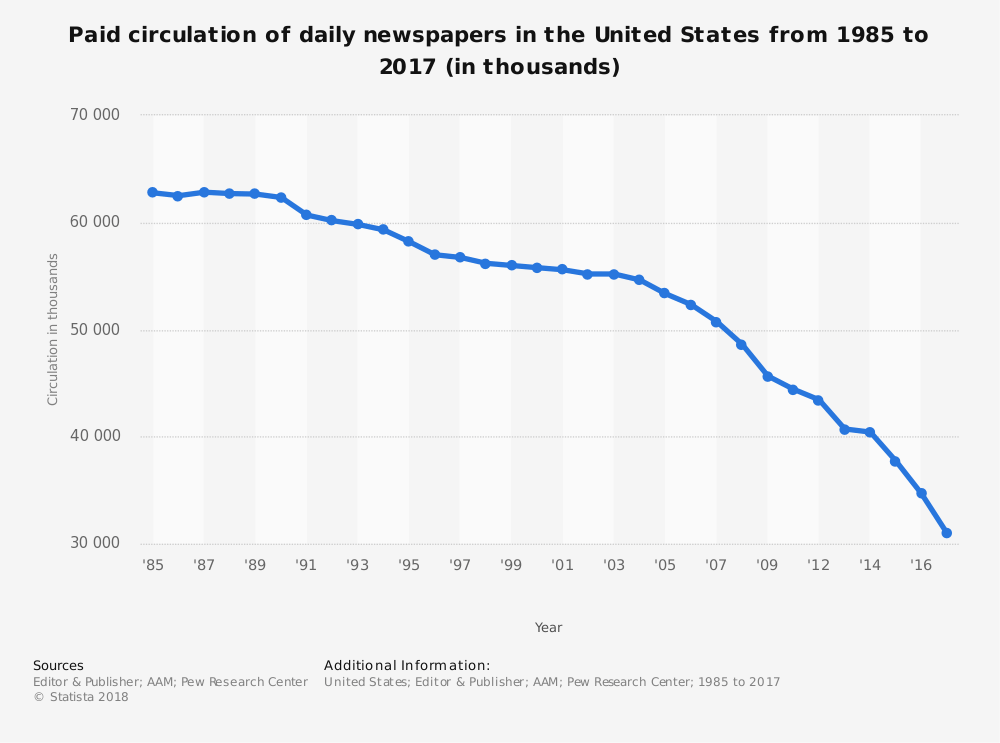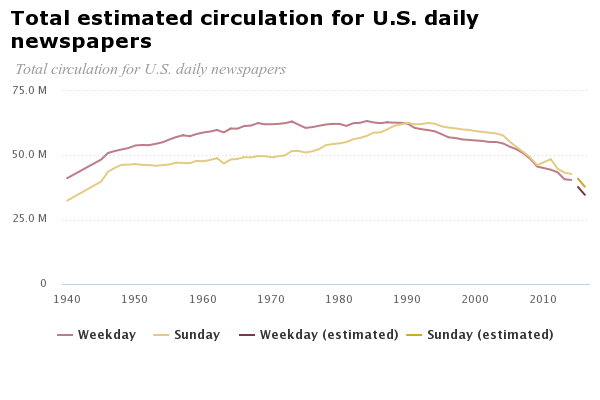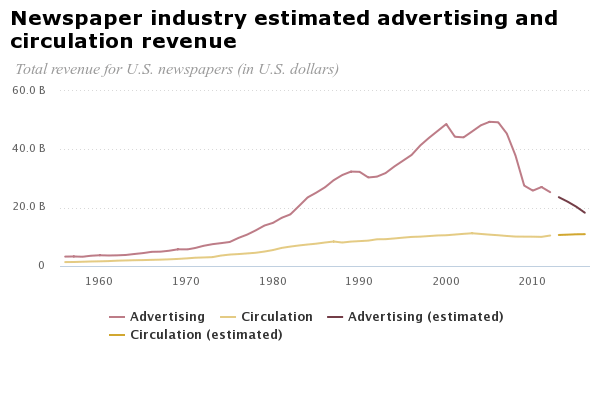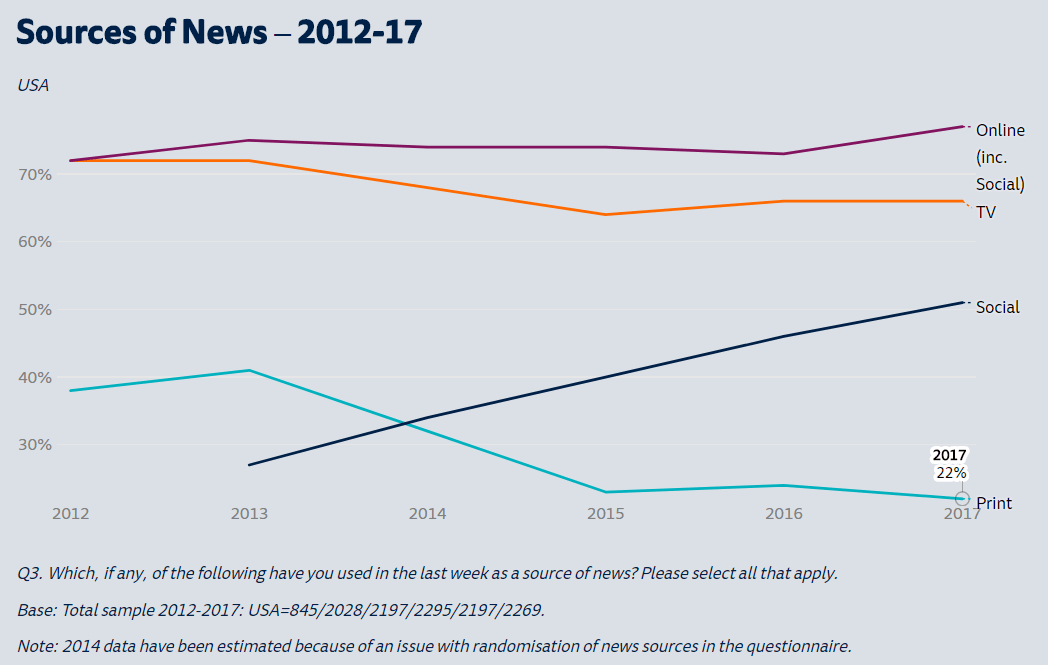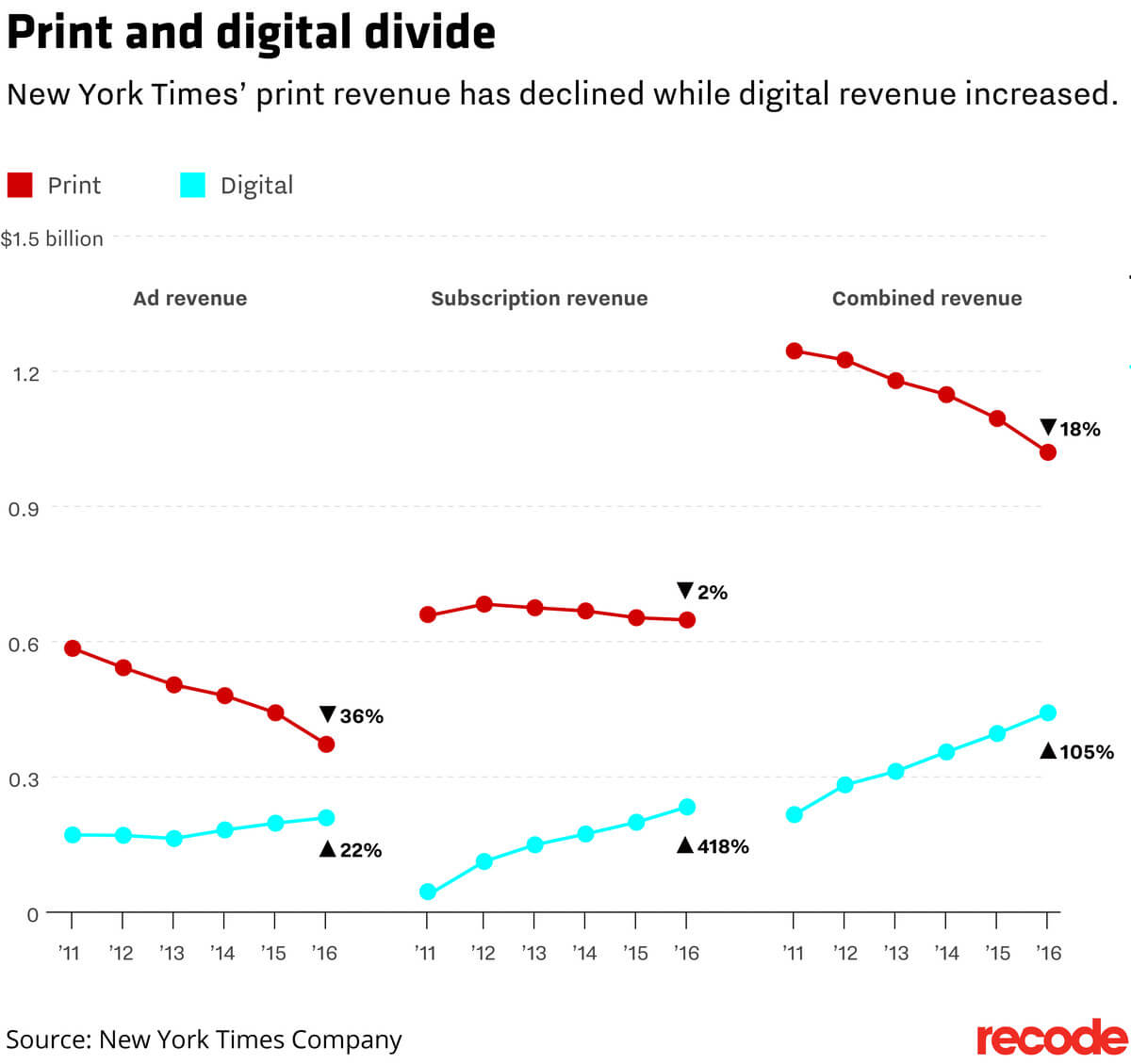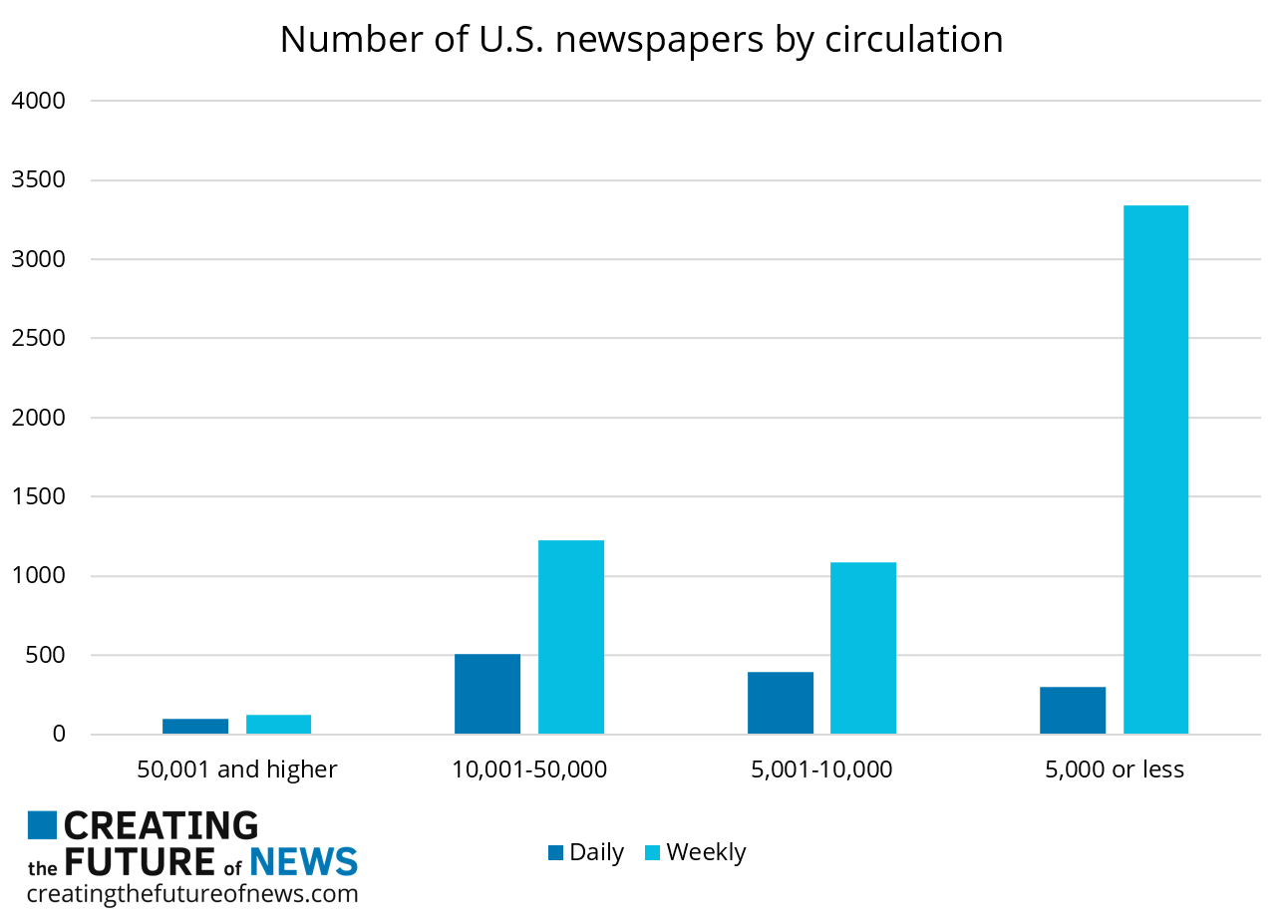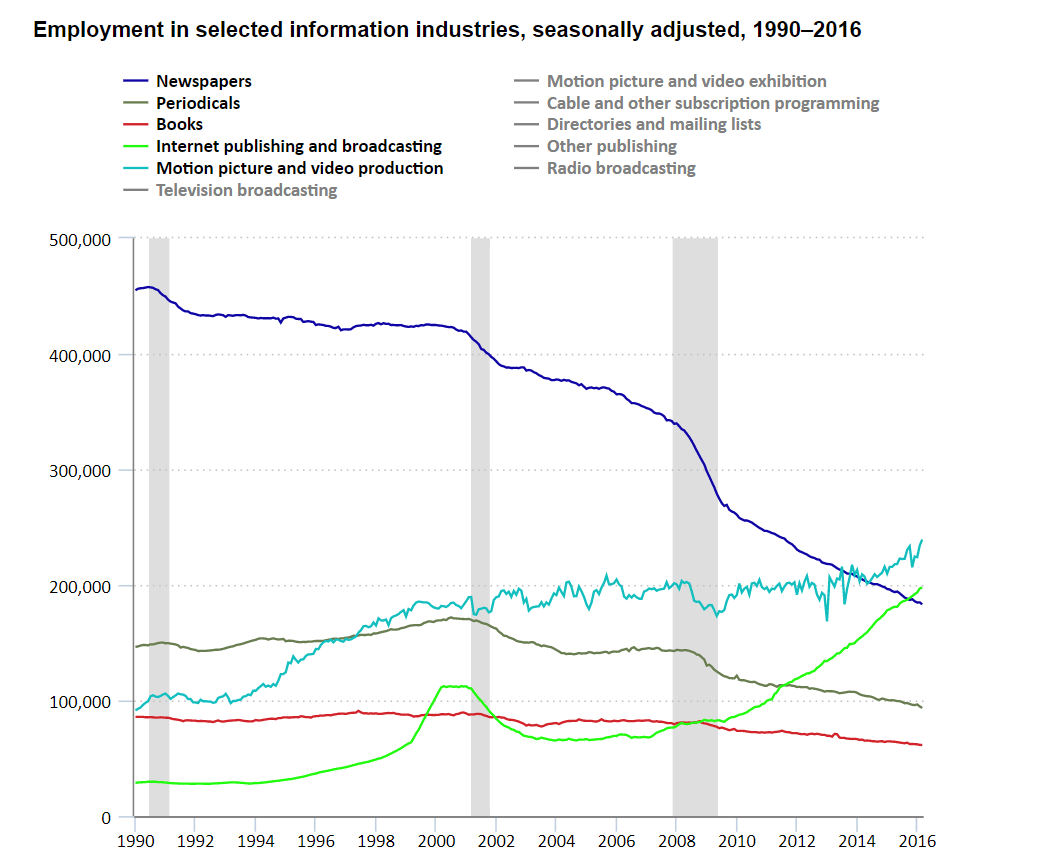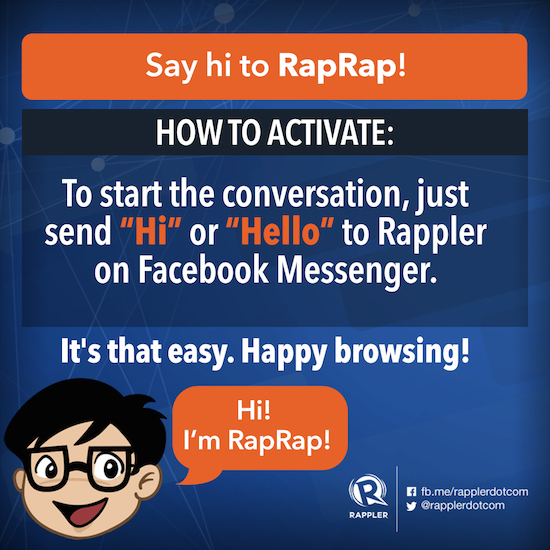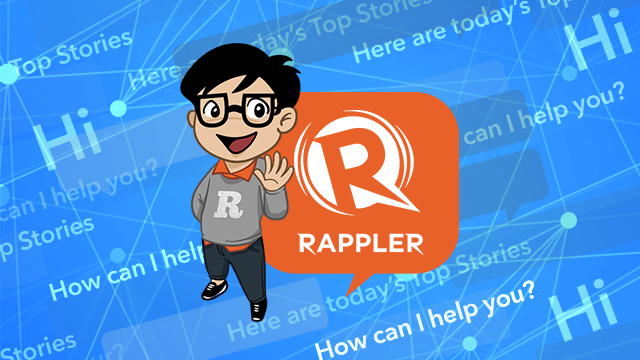Predicting the Media Landscape: What Lies Ahead for 2018
In an era of “fake news” is journalism at last fighting back? Taking a look back at 2017 it would appear so. Indeed, it would seem that the shocks to the media industry over the past few years are helping many organizations focus once again on quality news and investigations–in part to distinguish themselves from the mass of other, often dubious, information online.
2017 proved to be a vintage year full of reporting that made a real difference–from the The New York Times exposé on Harvey Weinstein to the ProPublica investigations of Facebook, and the Paradise Papers investigations. In terms of revenue, however, it was a mixed year that saw stronger titles pulling ahead while others faltered. The shift to reader revenue is well underway, but will not work for everyone. So what lies ahead for journalism and the media in 2018?
The report Journalism, Media, and Technology Trends and Predictions 2018, published by the Reuters Institute for the Study of Journalism with the support of Google’s Digital News Initiative, holds some clues. Based on survey responses from 194 digital leaders from 29 countries, it lays out the challenges and opportunities expected for the news industry in the year ahead.
The battle with the platforms
Concerns expressed by the respondents include increasing worry about the power and influence of platforms, especially Facebook and Snapchat. However, many publishers blamed themselves for their ongoing difficulties, citing internal factors such as resistance to change and inability to innovate.
The survey makes clear that many publishers still feel that platform companies, Facebook in particular, need to do much more to face up to their wider responsibilities. Advertisers are demanding greater transparency over measurement and for more protection for their brands. Politicians, regulators and ordinary users will be adding to that pressure. Something significant is likely to give in 2018.
According to respondents, we should also expect more news organizations to pull out of deals with Facebook, Apple, and Snapchat as they realize they are not delivering sufficient financial return.
The report also predicts that the platforms will be forced to employ armies of human internet moderators.
More focus on subscribers and personalization
Almost half the publishers surveyed see subscriptions as a very important source of revenue in 2018, more so than digital display advertising and branded and sponsored content.
To attract more subscribers, publishers say they’ll focus on podcasts and look at developing content for voice-activated-speakers. Almost three-quarters plan to actively experiment with artificial intelligence (AI) to support better content recommendations and drive greater production efficiency.
Media companies, it appears, will be actively moving customers from the “anonymous to the known,” so they can develop more loyal relationships and prepare for an era of more personalized service. Quoted in the report, Mark Thompson, CEO of The New York Times, said: “AI/intelligent assistants solving for the consumer needs across devices, environments and media is the big tech story of the year.”
The rise and rise of artificial intelligence
The report also highlighted developments to watch in this space:
- Computer-driven recommendations
One of the most likely uses of AI by news publishers will be in driving better content recommendations on websites, via apps, or through push-notifications. A new recommendation service called James, currently being developed by The Times and Sunday Times for News UK, aims to learn about individual preferences and automatically personalize each edition in terms of format, time and frequency. - Assistants for journalists
Get ready for AI bots that can manage journalists’ diaries, organize meetings, and respond to their emails. Already, Replika is an AI assistant that, with a bit of training, can pick up your moods, preferences, and mannerisms until it starts to sound like you and think like you when writing text. In the future, it may be able to mimic your style of posts on Twitter and Facebook and take care of your social media while you’re asleep. - Automated and semi-automated fact-checking
AI will also assist journalists with fact-checking political claims in real time, possibly even while conducting a live radio or TV interview. - Commercial optimization
The use of algorithms to recognize patterns in data and make predictions (machine learning) is already being used to drive commercial decisions. AI-driven paywalls will be able to identify likely subscribers and, based on previous behavior, serve up the offer (and wording) most likely to persuade them to subscribe. Another use will be to create more personalized advertisements. - Intelligent automation of workflows
News organizations know they have to do more with less, without leading to journalist burn out. In the survey, 91% of respondents cited production efficiency as a “very important” or “quite important” priority this year. Intelligent automation (IA) is one way to achieve this. As examples, the Press Association in the UK has been working with Urbs media to deliver hundreds of semi-automated stories for local newspaper clients, while an automated news rewriting programme called Dreamwriter is already creating around 2500 pieces of news on finance, technology, and sports daily. - New audio platforms
Meanwhile, new devices and technologies are set to change consumer behavior, especially the rapid adoption of voice-enabled smart speakers such as Amazon Echo and Google Home. Media companies polled in the leaders’ survey said they would be investing more this year in audio-based media such as podcasts and shorter form content experiments that are native to the new platforms.
Facing an uncertain future
The report concludes with the inevitable—that the future looks uncertain. “There is no sense that the technology revolution is slowing down. If anything, it seems as if we are at the beginning of a new phase of disruption. The era of artificial intelligence will bring new opportunities for creativity and for efficiency—but also for greater misinformation and manipulation.
“Ironically, publishers know that in many ways they need to behave more like Silicon Valley tech companies, even as they try to wrest back a measure of control around distribution and strategy. That means taking risks, breaking down hierarchies and delivering higher quality products and services that audiences love. In doing this, the smartest companies will be combining data and algorithms with great content as they seek to rebuild both trust and their businesses.”

